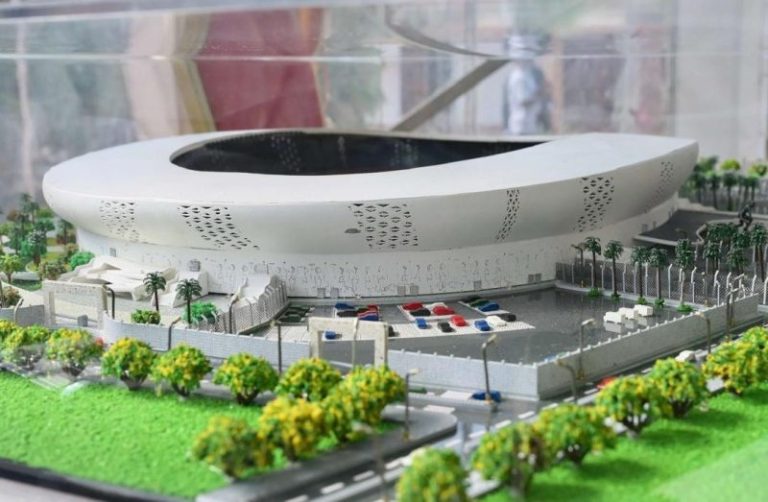Home » Akii Bua Olympic Stadium: Transforming Uganda’s Sports Landscape
Akii Bua Olympic Stadium: Transforming Uganda’s Sports Landscape

The Akii Bua Olympic Stadium project represents a turning point in sports development within Uganda. Through a signed contract between the Government of Uganda and Egypt’s SAMCO National Construction Company, this state-of-the-art facility is poised to elevate sports, create jobs, and inspire a generation of athletes in Lira City.
The Vision Behind Akii Bua Olympic Stadium
It will be known as Akii Bua Olympic Stadium, a stadium named after John Akii-Bua, Uganda’s first Olympic gold medalist. Not only is it intended to be a sporting facility, but it is also designed to portray hope, development, and resilience for the people of the Lango subregion and the nation as a whole.
Furthermore, the $129 million project is aimed at giving Uganda a world-class facility, one that can compete on the international scene with other countries in terms of hosting international events. Consequently, the government’s determination to construct this landmark stadium underscores its commitment to nurturing talent and elevating the country’s prestige in athletics and other sports.
Contract Signing Ceremony: A Landmark Agreement
The signing of the contract at State House Nakasero on December 6, 2024, was a momentous occasion. It was graced by the First Lady and Minister of Education and Sports, Mrs. Janet Museveni. Moreover, the project will be handled by SAMCO National Construction Company, marking the beginning of an important fulfillment of President Museveni’s long-standing pledge to the people of Lango.
Key figures involved in the contract signing included:
- Muhammad Bbaale, Accounting Officer for the National Council of Sports (NCS), representing Uganda.
- Engineer Ibrahim Abdelaziz Mahmoud Mabrouk, representing SAMCO National Construction.
- Pius Biribonwoha, Uganda’s Solicitor General, as a witness.
Additionally, the official title of 18.455 hectares of land for the stadium was formally handed over to the NCS chairperson, Ambrose Tashobya, by Mrs. Museveni during the occasion. This ceremony symbolized the start of this ambitious project.
Stadium Features: Setting a New Benchmark
The Akii Bua Olympic Stadium will be a comprehensive sports complex, blending modern amenities with advanced infrastructure. These facilities are designed not only to cater to athletes but also to provide an exceptional experience for spectators.
Main Stadium
- Seating Capacity: 20,000.
- Athletic Track: Modern track for professional and amateur athletic events.
Indoor and Outdoor Facilities
- Multi-Sport Indoor Stadium: 2,000 seats for various indoor games.
- Semi-Olympic Swimming Pool: A 25-meter pool for competitive swimming.
- Outdoor Courts: Basketball, netball, volleyball, and badminton facilities.
Additional Amenities
- Parking: Space for up to 1,000 vehicles.
- Hostel: 60 rooms for accommodating athletes and visitors.
- Clubhouse: Equipped to meet stadium operation and administrative needs.
- Sports Pitches: Five additional pitches for training and other sports activities.
Infrastructure and Sustainability
To ensure long-term sustainability, the project includes several innovative features:
- Roads, ICT systems, utilities, and a sewerage treatment plant.
- A borehole to minimize water maintenance costs.
- Comprehensive landscaping, perimeter fencing, and advanced security systems.
A Catalyst for Development in Lira City
Beyond its role as a sports venue, the Akii Bua Olympic Stadium will act as a catalyst for regional development. By situating the facility in Lira City, the government seeks to boost economic growth, tourism, and community pride.
As Hon. Peter Ogwang, the State Minister for Sports, remarked:
“This state-of-the-art facility is not just a stadium; it’s a promise kept and a legacy for the people of Lango. The time has come to turn years of waiting into a reality that will inspire generations.”
Moreover, Ogwang emphasized the importance of timely delivery, urging the contractors to adhere to the 20-month timeline. He also called upon the First Lady and President Museveni to commission the work, further underlining the government’s commitment to the project.
Economic and Social Benefits
The stadium is expected to yield numerous economic and social benefits:
- Job Creation
The construction and operation phases will create numerous employment opportunities for residents of Lira and its surroundings. From construction workers to event managers, many will benefit. - Talent Development
With world-class amenities, the stadium will nurture local talent. As a result, athletes will have the resources needed to compete at the highest levels. - Tourism and Revenue
Hosting international events in the future will undoubtedly attract tourists, benefiting local businesses and boosting regional revenue. - Community Engagement
The stadium will inspire pride and unity among community members. Additionally, it will serve as a venue for sports, cultural events, and festivities.
Historical Context and Significance
This project stems from a promise made by President Museveni in 2010 to the people of Lango. The Akii Bua Olympic Stadium not only honors John Akii-Bua’s memory but also ensures his achievements continue to inspire future generations.
Timelines and Accountability
The stadium is slated for completion within 20 months, making mid-2026 the target date. This ambitious timeline necessitates efficient coordination among all stakeholders.
As Hon. Ogwang reiterated:
“We want this project delivered on time and to the highest standards. The people of Lango have waited long enough.”
A Legacy in the Making
In conclusion, the Akii Bua Olympic Stadium is more than just a construction project—it is a testament to Uganda’s commitment to sports, regional development, and honoring its heroes. By 2026, this modern facility will stand in Lira City as a beacon of hope, unity, and progress.
